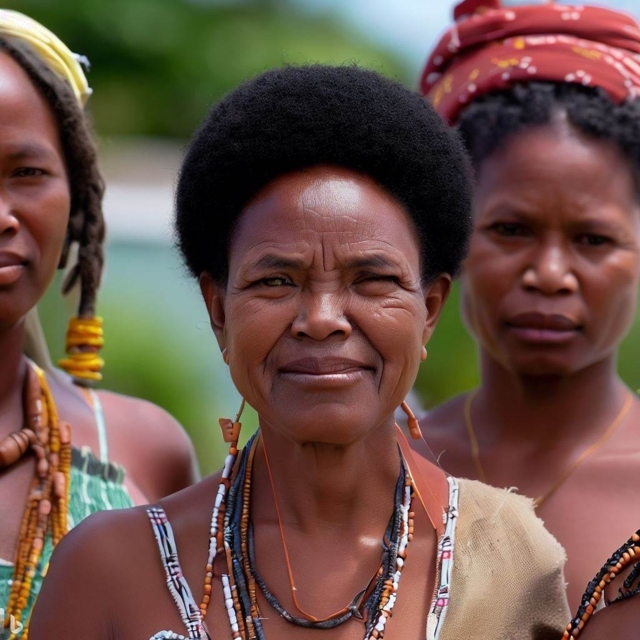How the Treaty of Concordia Shaped Cultural Differences in the Island?
The Treaty of Concordia, also known as the Partition Treaty of 1648, was an agreement signed between the Kingdom of France and the Dutch Republic on March 23rd, 1648. This treaty effectively partitioned the island, dividing it into French (Saint Martin) and Dutch (Sint Maarten) territories. I will explore the context that led up to this treaty, its terms, and the long-term consequences of this division.
Historical Background
The island of Saint Martin has been inhabited by various indigenous peoples since prehistoric times. However, European powers began to show interest in the region during the late Renaissance period due to its strategic location and potential resources such as sugar cane plantations and salt pans. Despite their efforts to claim ownership over the territory, neither the Spanish nor Portuguese colonized the entire island. Instead, they established trading posts along the coastline of both sides of Saint Martin.
In the mid-seventeenth century, the Kingdom of France and the Dutch Republic emerged as dominant forces in Europe following the Thirty Years’ War. Both states sought to assert control over the Caribbean islands, including those around Saint Martin. During this time, the island became subject to repeated incursions from privateers and pirates seeking safe harbours to launch raids against Spanish shipping passing through the area. To address these growing threats and secure their respective interests in the region, representatives from the two nations met several times before finally reaching an accord on March 23rd, 1648 – henceforth referred to as the Treaty of Concordia.
Terms of the Treaty
Under the provisions of the Treaty of Concordia, the island of Saint Martin was partitioned between the Kingdom of France and the Dutch Republic. The division followed a perpendicular line running approximately east-west across the middle of the island, creating two roughly equal halves. The northern half fell under Dutch jurisdiction while the southern portion remained part of France.
Aftermath of the Treaty
The signing of the Treaty of Concordia brought significant changes to the political landscape of Saint Martin, transforming the once unified island into separate domains belonging to different European powers. While it failed to prevent future conflicts or piracy attacks in the region, it did serve as a temporary solution to promote peaceful coexistence between France and the Netherlands.
Impact on Indigenous Communities
While the treaty primarily aimed to resolve territorial disputes among colonial powers, the division of Saint Martin affected the native populations living on the island. The local Arawak tribes who had settled there were already struggling to adapt to the changing socio-political environment caused by European colonial expansion and slavery practices introduced by the arriving settlers. The treaty further exacerbated the displacement and marginalization of these communities. Their traditional way of life and cultural heritage suffered as a result of the island’s partition, forcing them to navigate complex relationships with new rulers and adopt new survival strategies. Although the extent of their suffering is difficult to measure, scholars agree that the impact must have been profound considering the magnitude of historical trauma experienced by Native American societies throughout the Americas.
Conclusion
Since the signing of the Treaty of Concordia, many historians agree that the division has resulted in distinct cultures developing on either side of the island. This divide continues to shape the character and identity of modern-day Sint Maarten and Saint-Martin today.
As noted earlier, the French side developed a more relaxed, laidback atmosphere typified by small restaurants serving Creole cuisine and markets selling handmade crafts. In contrast, the Dutch side features resort developments catering to tourists seeking luxury experiences and high-end amenities. These differences persist to this day, reflecting the enduring legacy of the Treaty of Concordia on the island’s cultural evolution.
Therefore, it is essential not only to acknowledge the treaty’s role in shaping the current reality but also to recognize how it influenced the development of diverse cultures within one shared space. By recognizing the complexity inherent in Saint Martin’s history, we can better understand the richness of its present-day culture and strive towards a harmonious future where all aspects of its multifaceted past are valued equally.
References
– Treaty of Concordia – https://en.wikipedia.org/wiki/Treaty_of_Concordia
– Treaty of Concordia – https://st-maarten.com/index.php/island/history-overview-st-maarten-st-martin/treaty
– About Treaty of Concordia – https://dbpedia.org/page/Treaty_of_Concordia
– Concordia Monument – https://www.visitstmaarten.com/monuments/concordia-monument/
Tags
Divi Meetup 2019, San Francisco
Related Articles
Unappreciated Greatness
Life and Legacy of Jahangir of the Mughal Empire. Jahangir ruled over one of the largest empires in human history during his lifetime, yet few people outside of South Asia have heard of him. I aim to shed light on the life and legacy of this remarkable figure,...
The Plague Doctor’s Diary
A Personal Account of the Turin Epidemic of 1656. I am writing this diary to record my experiences and observations as a plague doctor in Turin, the capital of the Duchy of Savoy, during the terrible epidemic that has afflicted this city and its surroundings since the...
The Timeless Beauty of Bustan
Unveiling the Secrets of Saadi Shirazi's Masterpiece.In the realm of Persian literature, few works have captured the essence of love, spirituality, and morality quite like Bustan (The Orchard) by Saadi Shirazi. This 13th-century masterpiece has left a lasting impact...
Stay Up to Date With The Latest News & Updates
Explore
Browse your topics of interest using our keyword list.
Join Our Newsletter
Sign-up to get an overview of our recent articles handpicked by our editors.
Follow Us
Follow our social media accounts to get instant notifications about our newly published articles.









